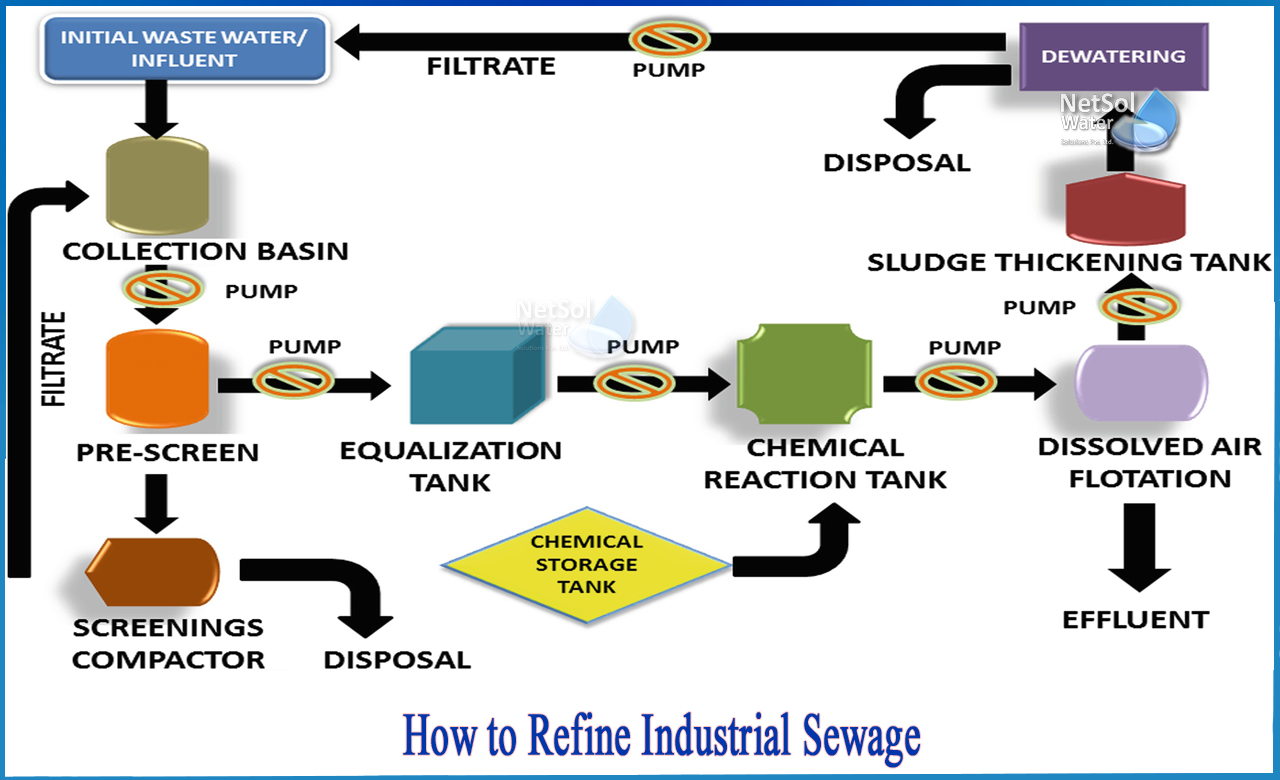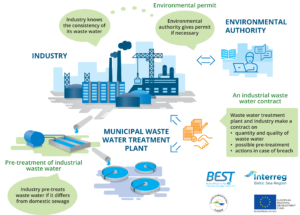Industrial Waste Water Treatment-- Comprehensive Solutions for Wastewater Disposal
Wiki Article
Challenges and Solutions in Hazardous Waste Water Treatment
The therapy of industrial wastewater presents a diverse selection of obstacles, ranging from strict regulatory compliance to the complexities of expense administration and technological constraints. The irregularity in waste composition better makes complex the efficiency of conventional therapy methods, usually resulting in intensified functional expenses.Regulatory Conformity Obstacles
Exactly how can industrial centers browse the complex landscape of regulative conformity in wastewater therapy? The regulative structure governing wastewater management is diverse, frequently varying by territory and kind of sector.To successfully manage these compliance difficulties, centers need to apply durable monitoring and reporting systems that ensure real-time information collection and analysis. Routine audits and threat analyses can recognize potential conformity spaces, permitting for positive modifications in therapy procedures. Staff member training programs concentrating on regulative knowledge and finest techniques are important to cultivate a society of compliance within the organization.
In addition, involving with regulatory firms can provide valuable insights and clear up ambiguous regulations. Facilities might additionally take advantage of speaking with ecological professionals that specialize in wastewater therapy compliance, making certain that they stay informed of progressing guidelines. By embracing these techniques, industrial centers can not only meet compliance requirements yet likewise enhance their functional performance and ecological stewardship.
Expense and Financial Barriers
Browsing regulatory conformity in wastewater therapy frequently presents substantial economic difficulties for industrial centers. The prices related to applying needed treatment innovations, preserving compliance with stringent policies, and managing functional costs can be daunting. Several organizations face high preliminary capital investment for the building or upgrading of wastewater therapy plants, which may strain spending plans, especially for medium-sized and tiny enterprises.Moreover, recurring operational prices, consisting of labor, upkeep, and chemical inputs, contribute to the monetary burden. The changability of fluctuating power costs and the possible demand for added financial investments to satisfy evolving policies intensify these economic stress. In a lot of cases, the lack of economic incentives or assistance from federal government bodies makes it much more difficult for companies to warrant financial investments in innovative treatment systems.
Additionally, the financial practicality of wastewater treatment remedies is frequently questioned, specifically for industries with limited earnings margins. As a result, it is important for industrial facilities to check out affordable approaches, such as embracing innovative financing alternatives, participating in collaborations, and leveraging arising innovations that can aid mitigate these economic obstacles while ensuring compliance with ecological requirements.

Technological Limitations
Various technological restrictions prevent the effectiveness of industrial wastewater treatment procedures. One substantial difficulty is the insufficiency of existing therapy innovations to deal with intricate pollutants. Numerous traditional techniques, such as activated sludge and chemical precipitation, deal with the removal of emerging toxins, including drugs and microplastics. This constraint often results in the discharge of inadequately dealt with water, which can have damaging ecological effects.Furthermore, the scalability of therapy innovations presents an obstacle. While some advanced approaches, like membrane filtration or sophisticated oxidation, show assurance in regulated settings, their implementation on a bigger range can be excessively pricey and technically difficult. Upkeep and functional complexities further complicate the fostering of these systems, specifically for smaller markets with minimal technical click here now experience.
The combination of real-time tracking modern technologies likewise stays not enough in many therapy centers. Without efficient tracking systems, operators can not properly examine treatment efficiency or spot prospective failures, resulting in inconsistent effluent quality. Addressing these technical constraints via research study and growth, together with investment in ingenious remedies, is crucial for boosting the efficiency of industrial wastewater treatment and guaranteeing regulatory compliance.
Irregularity in Waste Structure
In the realm of industrial wastewater therapy, the irregularity in waste structure provides a powerful obstacle. Industries generate wastewater with diverse characteristics, affected by factors such as production procedures, raw materials, and functional methods. This diversification complicates the therapy procedure, as traditional systems frequently have a hard time to successfully deal with the vast array of pollutants present.As an example, wastewater from food processing may include high levels of raw material, while effluents from chemical review manufacturing could consist of hazardous materials and heavy steels. This difference requires adaptable therapy techniques to make sure conformity with environmental policies and shield public health and wellness. Additionally, fluctuations in waste composition can occur over time, affected by adjustments in production timetables, maintenance tasks, or the intro of brand-new products.

Innovative Treatment Solutions
Ingenious treatment solutions are necessary for dealing with the intricacies of commercial wastewater administration. Typical methods usually drop short in properly eliminating a variety of impurities, particularly in centers with varied effluent streams. Recent advancements concentrate on integrating innovative innovations to enhance therapy efficiency and sustainability.One appealing method is making use of advanced oxidation processes (AOPs), which utilize powerful oxidants to break down natural contaminants. AOPs, consisting of photocatalysis and ozonation, can considerably decrease hazardous materials and improve effluent quality. Furthermore, membrane layer bioreactor (MBR) modern technology has gotten traction, integrating biological treatment with membrane purification, leading to high-grade effluent and minimized footprint.
Another cutting-edge option is the application of source healing systems. Strategies like anaerobic food digestion not only treat wastewater however additionally generate biogas, which can be taken advantage of as a renewable resource resource. Moreover, the fostering of expert system and artificial intelligence models can enhance treatment processes by forecasting variations in wastewater structure, therefore improving operational effectiveness.
These innovative remedies not just address regulatory conformity but likewise promote environmental sustainability, leading the way for a more resistant and efficient industrial ecological community.
Verdict
In conclusion, dealing with the difficulties of industrial wastewater treatment needs a diverse strategy that integrates regulatory conformity, cost management, and technical developments. A dedication to continual renovation in treatment methodologies will inevitably contribute to the effective monitoring of commercial wastewater and environmental defense.The treatment of commercial wastewater provides a complex array of challenges, varying from stringent regulative compliance to the intricacies of cost monitoring and technological limitations. Industrial Waste Water Treatment.Navigating governing compliance in wastewater therapy frequently presents significant economic challenges for commercial facilities. Dealing with these technical limitations via research and development, along with financial investment in cutting-edge remedies, is vital for enhancing the efficiency of industrial wastewater treatment and guaranteeing regulatory conformity
Wastewater treatment centers should spend in durable monitoring systems and flexible treatment modern technologies capable of accommodating differing influent features.In conclusion, attending to the challenges of commercial wastewater treatment calls for a multifaceted technique that incorporates regulative conformity, expense administration, and technological developments.
Report this wiki page